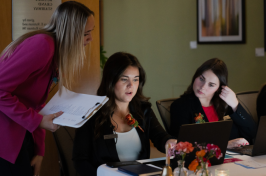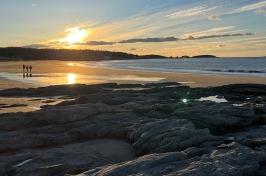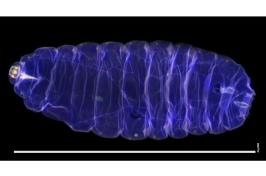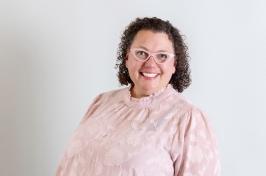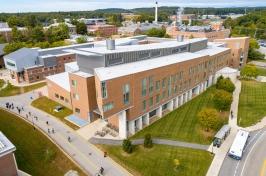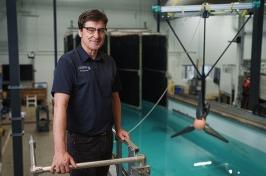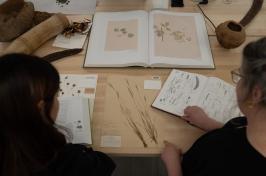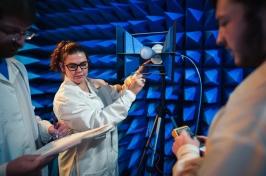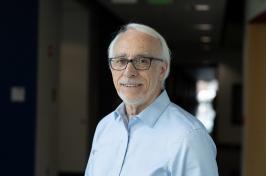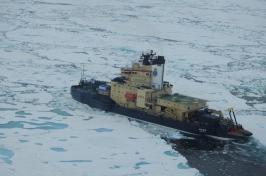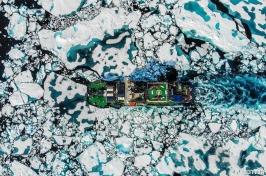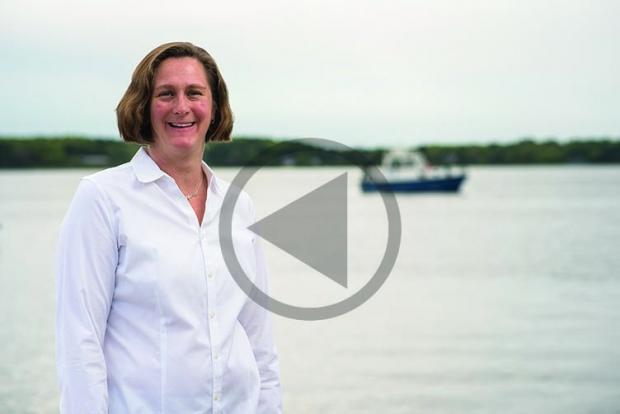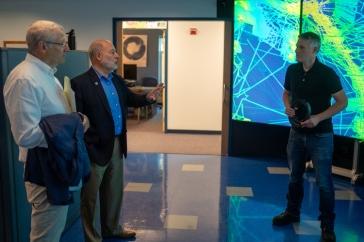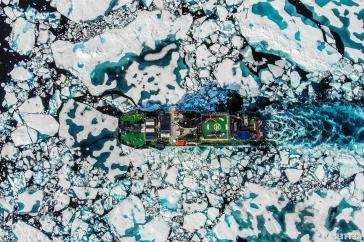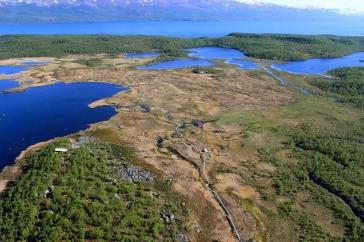
Can you hear that? 每时每刻,我们周围都是一个完整的声音世界. With acoustic technology, 联合国大学的研究人员正在描绘地球上正在发生的事情, 在它的海洋和一些最小的生物之间. Their findings are helping us better understand topics ranging from how new technologies affect endangered species to how to best mitigate oil spills.
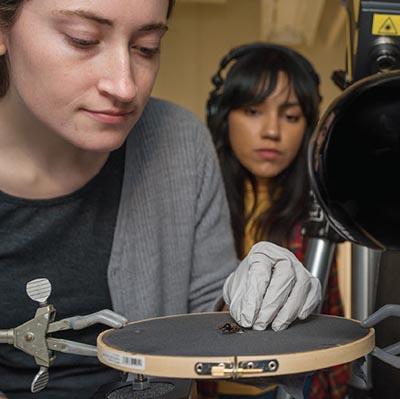
Acoustics provide minimally invasive ways to capture data on the impact of noise on humans and animals. 这是丹·霍华德(Dan Howard)的策略 biological sciences, whose bug-filled lab primarily listens to insects to learn how they communicate and are affected by the noisy world around them.
在一个平常的早晨,攻读硕士学位的米娅·菲利普斯(Mia Phillips)正在学习 integrative and organismal biological sciences, is investigating the potential effects of wind turbine-induced noise on American burying beetles, an endangered species, while fellow master’s degree student Sarah Dodgin is weeding through approximately 50,000 one-minute audio files to assess the consequences of prescribed grassland fires to biodiversity.
Listening in the wild provides many opportunities to “monitor the heartbeat of the ecosystem,” Howard says. “有没有与气候变化模型相吻合的变化? What do those changes reflect or signify?”
Michael Palace and Ruth Varner of the department of Earth sciences and the Institute for the Study of Earth, Oceans, and Space are using hydrophones to identify the presence of methane below the water and land surface of the Arctic Circle — critical information for ongoing work in climate change. “Wetlands and lakes are a large, natural source of methane,” says Varner, professor of Earth sciences, explaining hydrophones let them “hear” methane bubbles to learn how often they occur and how much methane is emitted.
“The sensors we fabricate are inexpensive, 这使得我们可以在很多地方部署它们, at these sites, 以一种前所未有的方式覆盖景观,” says Palace, an associate professor of environmental science.
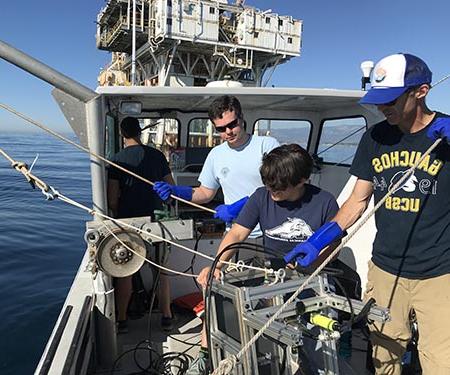
It’s important, Varner says, to know how these natural ecosystems are behaving to inform models of methane emissions that will ultimately help predict how this emission pathway may change as the climate does.
At the Center for Coastal and Ocean Mapping, where acoustical research has made possible the detailed maps that give the center world-renowned status, Thomas Weber and Jennifer Miksis-Olds have been back-to-back recipients of the Medwin Prize in Acoustical Oceanography from the Acoustical Society of America.
Weber, an associate professor of mechanical engineering该公司利用声纳技术识别水柱中的甲烷气泡. The importance of this research, he explains, is to gather objective data to inform decisions ranging from how to best mitigate oil spills to addressing climate change. “Most of our planet is ocean. That’s extremely important for things like climate, modeling for weather and daily life,” Weber says.
Weber explains how acoustics provide researchers the chance to “see” below the ocean, 让人类可以探索它作为栖息地的许多方面, resource, recreational area and even a military battle space.” With acoustics, for example, 他的团队可以探测到半径只有几毫米的气泡,500 meters of ocean. “That’s pretty amazing. The scale is just enormous.”
“The oceans are continually changing, and we can use sound to monitor that change — and hopefully to predict change before it happens.”
On more than one occasion, 韦伯的研究将他带到了墨西哥湾调查石油泄漏. His team, 其中包括Alexandra Padilla这样的研究生, who came to UNH from the University of Puerto Rico to pursue her doctorate under his guidance, is using acoustics to develop methods to help responders understand what is happening beneath the ocean’s surface. “Dispersants are toxic, so you want your response to be measured and accurate,” Weber says. 声学研究可以提供这样的信息.
The work has long-term implications as well. “Climate is changing. 我们想了解原因和贡献者, 以及海洋变暖对甲烷气泡的影响? What is their role in climate change? We need to provide evidence to assess what is happening and to what extent,” Weber says.
对于Miksis-Olds来说,研究副主任 School of Marine Science and Ocean Engineering, the “why” behind underwater eavesdropping includes learning about ocean conditions like wind speed and ice cover as well as marine life.
“The ocean is a naturally noisy place with animals, wind, waves and ice,” she explains. “We are examining the question of how human impact comes into play: How does it — or does it — affect marine life?”
Miksis-Olds is lead principal investigator of the Atlantic Deepwater Ecosystem Observatory Network for the U.S. mid- and south Atlantic outer continental shelf, which aims to generate long-term measurements of both natural and human factors in the region. “This is extremely important baseline information as our country considers development in that area for energy resources,” she explains.
Miksis-Olds leads the new Northeast Regional Environmental Acoustics Working Group, which includes Howard and Weber. 由UNH的卓越合作研究计划资助, the group aims to build interdisciplinary partnerships to address issues related to environmental acoustics.
She sums up the big-picture importance of acoustical research: “We can learn a lot about the environment by listening. We can do a lot of environmental monitoring that will help protect our ocean resources.”
-
Written By:
Jennifer Saunders | Communications and Public Affairs | jennifer.saunders@femdomcenter.com | 603-862-3585








